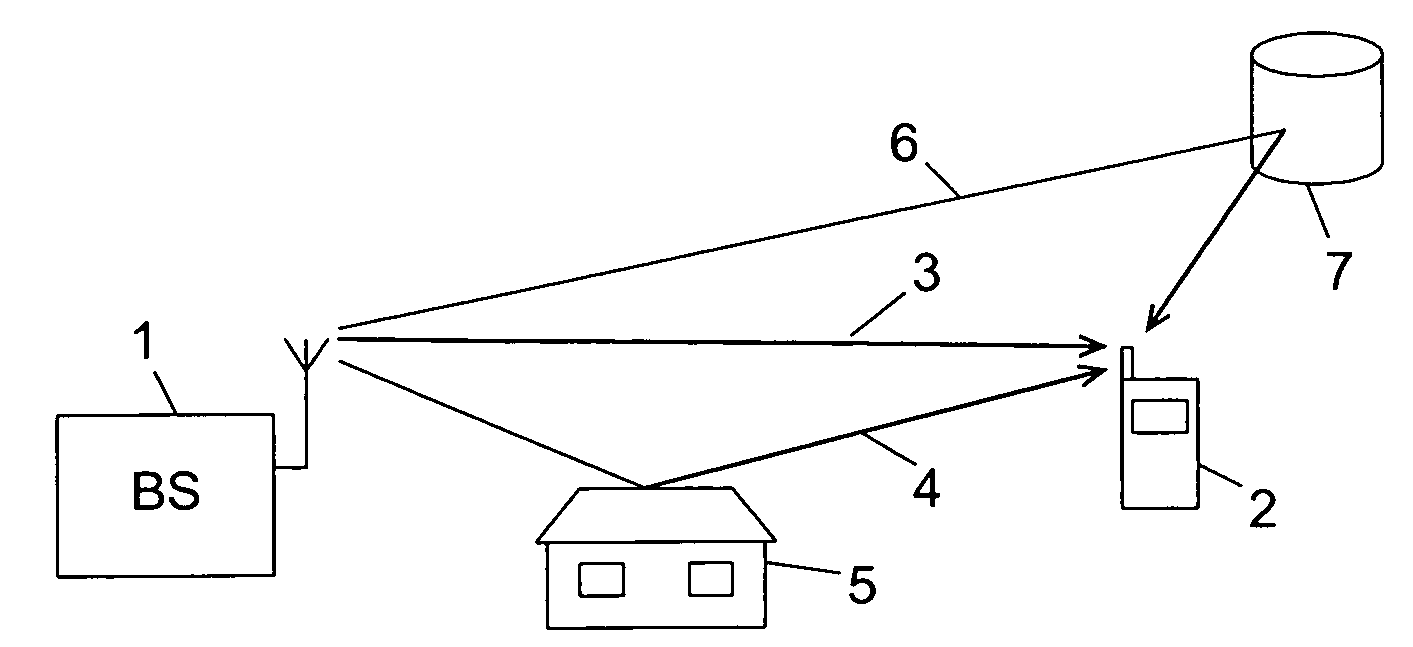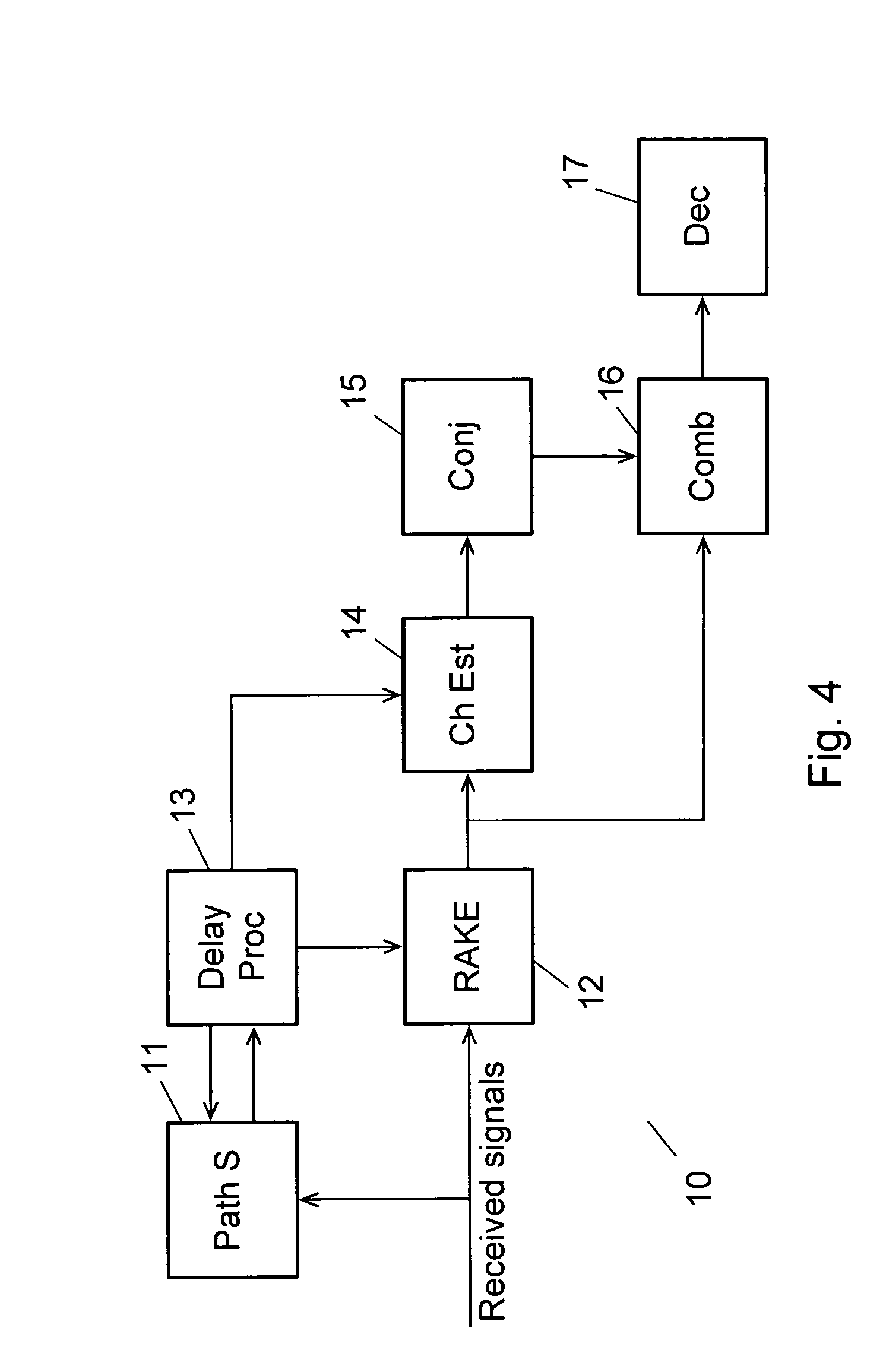Selecting Delay Values for a RAKE Receiver
a delay value and receiver technology, applied in the direction of digital transmission, amplitude demodulation, electrical apparatus, etc., can solve the problems of fading, significant decrease of path gain, interference in the receiver, etc., and achieve the effect of reducing current consumption and dye area, and sufficiently high resolution for the rak
- Summary
- Abstract
- Description
- Claims
- Application Information
AI Technical Summary
Benefits of technology
Problems solved by technology
Method used
Image
Examples
case i
[0144] The Nselected largest power values are from cell one, call this set S1. If a path from cell two is 100αcell% of the maximum power value for cell one, the weakest path is removed from the set S1 and it is replaced with the strongest path from cell two. This is done because we know that cell two is completely uncorrelated with the paths from cell one, and its contribution is therefore valuable.
case ii
[0145] The Nselected largest power values come from cells one and two, call this set S12. If a path from cell three is 100αcell% of the maximum power value for cell one, the weakest path is removed from the set S12, and it is replaced with the strongest path from cell three. If removing the weakest path means that cell two is not any more contained in the set S12, we remove instead the weakest path from cell one. For example, if Nselected equals six, and cell one contributes with the five strongest paths, we remove the weakest path from cell one and replace it with the strongest path from cell three. All other cells are ignored.
[0146]The procedure can readily be generalized to more cells. Above at most one delay has been replaced with a weaker delay from another cell, but this could also be generalized to comprise the replacement of several delays from multiple cells, however, at most one delay per newly introduced cell.
[0147]It should be observed, that except from the DPCH (Dedicat...
PUM
 Login to View More
Login to View More Abstract
Description
Claims
Application Information
 Login to View More
Login to View More - R&D
- Intellectual Property
- Life Sciences
- Materials
- Tech Scout
- Unparalleled Data Quality
- Higher Quality Content
- 60% Fewer Hallucinations
Browse by: Latest US Patents, China's latest patents, Technical Efficacy Thesaurus, Application Domain, Technology Topic, Popular Technical Reports.
© 2025 PatSnap. All rights reserved.Legal|Privacy policy|Modern Slavery Act Transparency Statement|Sitemap|About US| Contact US: help@patsnap.com



